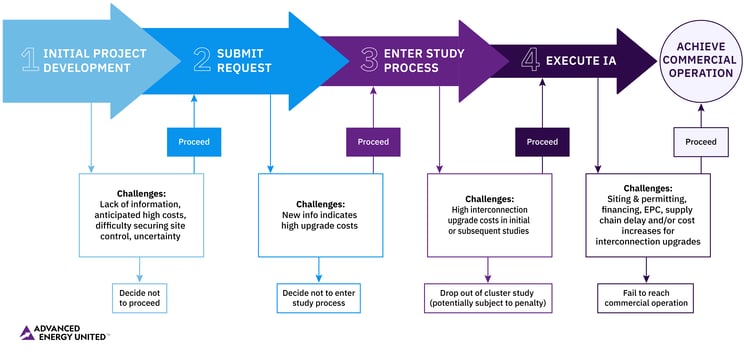Publish Date: October 5, 2023
Across the country, over 2,000 gigawatts of resources representing 10,000 projects are waiting for the green light to connect to the grid so they can commence construction and start operating—mostly clean resources like wind, solar, battery storage, and hybrid renewable-plus-storage projects. These projects are stuck in interconnection queues, undergoing an evaluation of reliability impacts and transmission system upgrades that must be made before they can start to deliver electricity to the grid.
The interconnection process is a complex, multi-step, multi-year journey that many projects don’t make it through. While necessary, the interconnection process is widely acknowledged to be broken, with everyone from the Federal Energy Regulatory Commission (FERC) to utilities and grid operators to project developers calling for and working toward reform. For projects trying to get built, the cost and schedule uncertainty of the interconnection process makes all the other parts of the development process—from financing to permitting—much more challenging.
This guide walks through the process from the perspective of a project developer, highlighting challenges faced along the way and explaining why some projects don’t make it to commercial operation. While the process is different in every region, this guide outlines the general trajectory any project takes to connect to the grid, reflecting reforms finalized by FERC in Order No. 2023 issued in July 2023, but not yet implemented. The guide explains the role of the project developer; the transmission provider, i.e., the Regional Transmission Organization or Independent System Operator (RTO/ISO), or the utility in non-RTO/ISO regions; and the transmission owner (in RTO/ISO regions where the transmission owner is not also the transmission operator).

Please complete the form to download the guide.